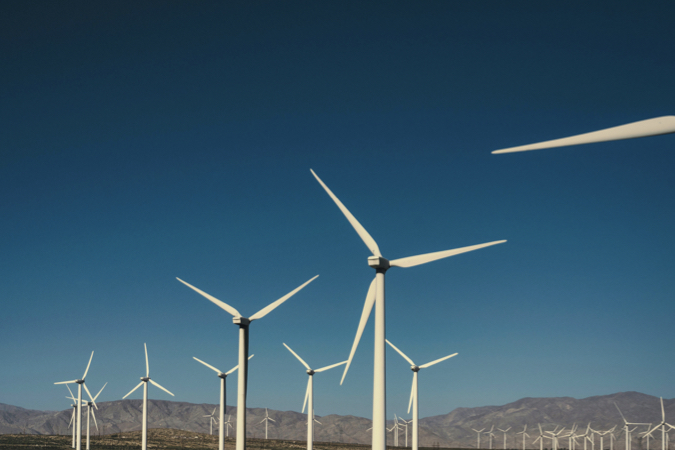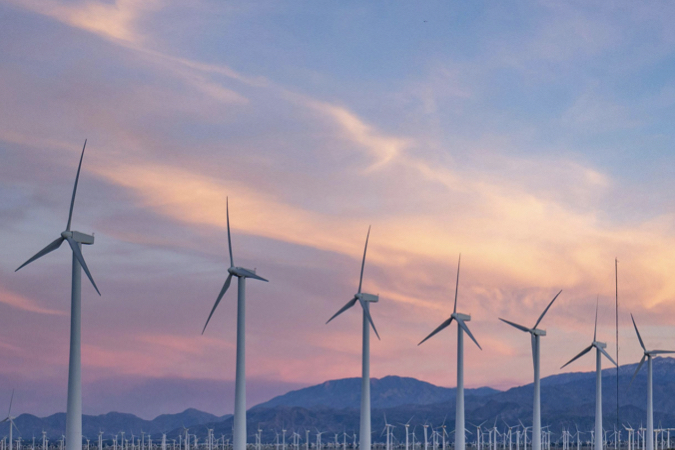



Bundled Renewable Energy Project in Gujarat and Karnataka
Key Info Story
Website
Social links
Project Story
The 2 MW wind power project site in Karnataka is located in Bableshwar Wind Park at Malaghan village at Basavana Bagewadi Taluka at Vijayapura district and 0.85 MW wind power project in Gujarat is located at Village Juna kataria, Khodasar of Bhachhau Taluka falling under Kutch district. On the other hand, the 3.5 MW solar PV power generation project site is located at Upparhalli village Hospet taluka within Bellari district of Karnataka. The generated electricity from this project activity is exported to the Indian grid. Electricity generated from 2 MW wind power plant in Karnataka is supplied to the local electricity distribution licensee Hubli Electricity Supply Company Limited (HESCOM), electricity generated from 0.85 MW wind power plant in Gujarat is supplied to Gujarat Urja Vikas Nigam Limited (GUVNL) while the 3.5 MW solar PV power plant supplies electricity to Gulbarga Electricity Supply Company Limited (GESCOM).

The project activity helps in Greenhouse gas (GHG) emission reduction by using renewable resources (wind/solar energy) for generating power which otherwise would have been generated using grid mix power plants, which is dominated by fossil fuel based thermal power plants. The project activity is a Greenfield project aimed at utilizing wind and solar energy sources to generate electricity. In the pre-project scenario, the equivalent amount of electricity would have been generated by grid mix power plants connected Indian grid, which is dominated by fossil fuel based thermal power plant. The project activity, thus reduces the anthropogenic emissions of Green House Gases (GHGs) in to the atmosphere associated with the equivalent amount of electricity generation from the fossil fuel-based grid connected power plant. Since the project activity is generating electricity through wind and solar energy, a clean renewable energy source it is not be causing any negative impact on the environment and thereby contributes to climate change mitigation efforts as well as sustainable development.

Social well-being
The project helps in generating employment opportunity during the construction and operational phases. The project activity leads to development in infrastructure in the region like development of roads power generation.
Economic well-being
The project is a clean technology investment in the region, which would not have been taken place in the absence of the VCS benefits. The project activity helps to reduce the demand supply gap in the region and eventually impact would be seen in national level. As the project activity generates employment opportunity in the local area. Hence, the project contributes to the economic sustainability, which is promotion of economic power.
Environmental well-being
The project utilizes wind and solar energy for generating electricity which otherwise would have been generated through alternate fuels-based power plants; thus, the project activity contributes in reduction in specific emissions (emissions of pollutant/unit of energy generated) including GHG emission. Being renewable resources, using wind or solar energy to generate electricity contributes to resource conservation of natural resource besides avoiding emission of harmful effluents. Thus, the project causes no negative impact on the surrounding environment contributing to environmental well-being.
Technological well-being
The project makes use of efficient environmentally safe technology for power generation. The project activity employs state of art technology i.e., 2.0 MW and 0.85 MW WTGs which has high power generation potential with optimized utilization of land and solar PV modules of combined capacity 3.5 MW with high power conversion efficiency. Hence, the project leads to technological well-being. The project activity promotes solar based power generation and encourages many other entrepreneurs to participate in similar projects. The generation of electricity from the project also leads to strengthening of the grid, increasing the energy availability thereby meeting energy demand to a certain extent leading to technological well-being.
Sustainable Development Goals
The United Nations Sustainable Development Goals (SDGs) are a set of 17 interconnected goals established by the United Nations in 2015. The SDGs provide a comprehensive framework for addressing the world's most pressing economic, social, and environmental challenges.
Global impact groups play a crucial role in supporting the SDGs by creating mechanisms to mobilise resources, collaborate with stakeholders, and drive collective action toward achieving the goals. These groups have the capacity to leverage their expertise and resources to make a significant positive impact.
Global impact groups play a crucial role in supporting the SDGs by creating mechanisms to mobilise resources, collaborate with stakeholders, and drive collective action toward achieving the goals. These groups have the capacity to leverage their expertise and resources to make a significant positive impact.


